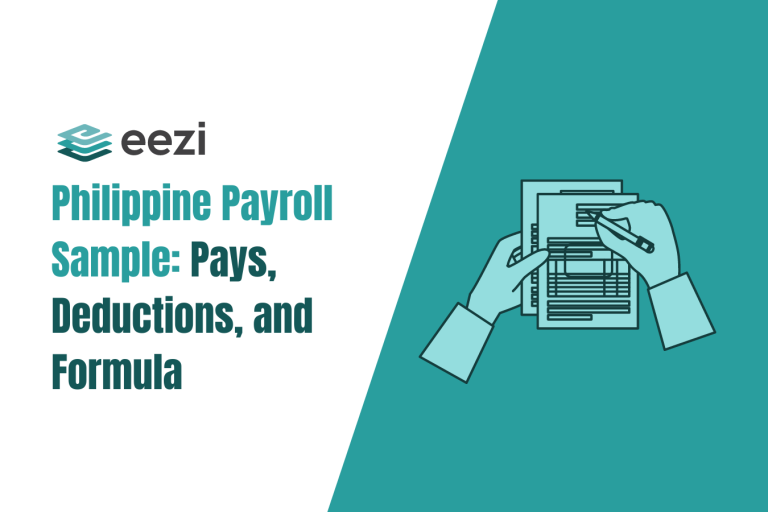What is the new minimum wage in the National Capital Region? Here is the complete guide to the changes in rates as per Wage Order No. NCR-24.
Key Points
- The Philippine minimum wage for 2024 varies across the regions.
- However, the new daily minimum wage for Metro Manila in 2024 ranges from Php 573 to Php 610 across its sectors.
- Moreover, the new monthly minimum rate for domestic helpers is Php Php 6,000.

What is minimum wage?
The minimum wage is the minimum salary required by law for employers to pay their employees. Additionally, the employer cannot set minimum wages any less using any collective agreement or individual contract.
Additionally, minimum wages ensure fair compensation for employees to afford their basic necessities. As such, the minimum wage varies from region to region as each locality has varying costs of living.
These wages are set by the local productivity boards and further classified by work sectors. Ultimately, the minimum wage corresponds with the region’s cost of living and adjusts to inflation rates.
Who sets the minimum wage?
The minimum wage rates are updated as often as necessary to address changes in the cost of basic necessities and upon approval of petitions for wage hikes. But who regulates these changes? Such is the duty of the National Wages and Productivity Commission (NWPC) and the Regional Tripartite Wages and Productivity Board (RTWPB).
These agencies are also under the Presidential Decree No. 442 or Labor Code of the Philippines, which was further amended in 1989 by Republic Act No. 6727.
Furthermore, the NWPC and the RTWPBs (wage boards) have the authority to set the new minimum wage rate per region. Additionally, the RTWPB sets the regional tripartite wage after reviewing the current cost of living in the region.
The goal of the RTWPB and NWPC is to set a fair minimum wage rate that allows minimum wage earners to afford their basic necessities and make the necessary wage adjustments when needed.
Wage sectors in the Philippines
The Philippine employment landscape is divided into many sectors to classify wage rates. Below are the common classifications:
Agricultural sector
- Plantation: Employment in agricultural environments where crops like sugarcane, rice, corn, and other plantation crops are grown. Workers in plantations usually engage in tasks such as planting, harvesting, and crop maintenance.
- Non-Plantation: This covers jobs related to farming that do not involve the tasks under the plantation classification. This includes working on smaller farms, livestock rearing, poultry farming, and other agricultural activities that fall outside the scope of plantation agriculture.
Non-agricultural sector
The non-agricultural sector encompasses various industries and sectors beyond the agricultural field. This includes the following:
- Manufacturing
- Construction
- Retail
- Services
- Hospitality
- Finance
- Other sectors
What differentiates the two sectors?
There are several key differences between these two sectors, including:
- Wage rates: Due to the seasonal and often unpredictable nature of agricultural work, workers in this sector have different wage rates. Moreover, regional wage rate also differ for plantation and non-plantation workers.
- Working hours: The maximum allowable working hours vary for agricultural versus non-agricultural workers. Non-agricultural workers typically follow standard working hours as mandated by law, while agricultural workers may have more flexible and extended hours to meet seasonal demands.
- Employment contracts: The terms and conditions of employment contracts can vary greatly between agricultural and non-agricultural workers. For example, employers hire agricultural workers on a seasonal or temporary basis, whereas non-agricultural workers usually have more stable and long-term contracts.
- Benefits and protections: Agricultural workers receive specific legal benefits and protections, including provisions for housing, transportation, and healthcare, to address the unique challenges associated with their line of work.
eezi HR Guide
Stay compliant with the required employee benefits in the Philippines.
Minimum wage rate in Metro Manila in 2024
Previous minimum wage orders
The Wage Board approved another batch of wage hikes last June 26 that went into effect on July 16, 2023. This adds another Php 40.00 to the previous rate and is still effective this 2024.
After the latest round of minimum wage Metro Manila hikes that took effect last July 13, 2024, the new wage order added another Php 35.00 to the existing daily rates.
As a result, below is the current minimum salary for private employees in the National Capital Region under the new wage order.
| Sector or Industry | Previous Minimum Wage Rate | Wage Increase | New Minimum Wage Rate |
|---|---|---|---|
| Non-Agriculture Sector | Php 610.00 | Php 35.00 | Php 645.00 |
| Agriculture Sector | Php 573.00 | Php 35.00 | Php 608.00 |
| Service or retail establishments with 15 or fewer employees | Php 573.00 | Php 35.00 | Php 608.00 |
| Manufacturing establishments regularly employing less than 10 workers | Php 573.00 | Php 35.00 | Php 608.00 |
Daily minimum wage rates for different cities in Metro Manila (NCR)
Here is a daily rate table for Metro Manila’s 16 cities and one independent municipality.
| City or Municipality | Non-Agriculture Sector | Agriculture, Service or Retail, Manufacturing |
|---|---|---|
| Caloocan City | Php 645.00 | Php 608.00 |
| Las Piñas City | Php 645.00 | Php 608.00 |
| Makati City | Php 645.00 | Php 608.00 |
| Malabon City | Php 645.00 | Php 608.00 |
| Mandaluyong City | Php 645.00 | Php 608.00 |
| Manila City | Php 645.00 | Php 608.00 |
| Marikina City | Php 645.00 | Php 608.00 |
| Muntinlupa City | Php 645.00 | Php 608.00 |
| Parañaque City | Php 645.00 | Php 608.00 |
| Pasay City | Php 645.00 | Php 608.00 |
| Pasig City | Php 645.00 | Php 608.00 |
| Quezon City | Php 645.00 | Php 608.00 |
| San Juan City | Php 645.00 | Php 608.00 |
| Taguig City | Php 645.00 | Php 608.00 |
| Valenzuela City | Php 645.00 | Php 608.00 |
| Navotas City | Php 645.00 | Php 608.00 |
| Pateros City | Php 645.00 | Php 608.00 |
Increased monthly minimum wage rate for local domestic workers and helpers
| Previous Monthly Wage Rate | Wage Increase | Current Monthly Wage Rate |
|---|---|---|
| Php 5,000.00 | Php 1,000.00 | Php 6,000.00 |
Aside from the increase in the daily wage rate of workers, the new wage order also set a new rate for domestic workers and helpers in the NCR. After the additional monthly minimum wage increase of Php 1,000, the new rate for domestic workers is now Php 6,000.
Latest Minimum Wage in Metro Manila (2024)
According to the Department of Labor and Employment (DOLE), the latest minimum wages in Metro Manila remained the same in 2024 as they were in 2023.
As a result, the minimum wage ranges from Php 608.00 to Php 645.00 per day in 2024.
Wage rates for other regions in the Philippines
The Philippines has three island groups: Luzon, Visayas, and Mindanao. This group consists of 18 regions. The Wage Rationalization Act, Republic Act No. 6727, establishes the minimum pay rates in the Philippines. Besides, daily minimum wage rates vary by region, with various city and provincial minimum wage rates for each region.
A national wage board determines minimum salary rates on a geographical basis. The board includes a Regional Director from the Department of Labor and Employment (DOLE). Here is a summary of the current regional daily minimum wage in the Philippines, by region:
Cordillera Administrative Region (CAR)
Effective in 2024, the MWR is Php 430.00 for all sectors in CAR.
Region I – Ilocos Region
Currently, after the second tranche of the minimum wage increase, the non-agriculture sector with 30 or more employees gets a rate of Php 435.00 per day.
Furthermore, those with 10-29 employees get paid Php 402.00, those with less than ten employees, and those in the non-plantation agriculture sector get Php 402.00, while those in plantation get Php 402.00 per day.
Region II – Cagayan Valley
Effective since April 2024, the MWR for the non-agriculture sector and retail and service establishments employing no more than ten employees is Php 450.00 per day, while those in the agriculture sector have their MWR set at Php 430.00 per day.
Region III – Central Luzon
The MWR for Region III is Php 500.00 for non-agriculture. In addition, the agricultural workers get Php 470.00 for plantation and Php 454.00 for non-plantation.
Region IV – A – CALABARZON (Cavite, Laguna, Batangas, Rizal, Quezon)
The MWR in Region IV-A for non-agriculture is Php 520.00. For agriculture, on the other hand, the wage rate is Php 479.00 for both plantation and non-plantation.
See the updated minimum wages for Calabarzon.
Region IV – B – MIMAROPA (Mindoro, Marinduque, Romblon, Palawan)
As of 2024, the minimum wage rate in MIMAROPA is Php 355.00 across all sectors.
Region V – Bicol Region
Effective on the first day of 2024, the MWR in the Bicol Region is Php 395.00 across all sectors.
Region VI – Western Visayas
Across all sectors, the minimum wage ranges from Php 440.00 to Php 480.00.
Region VII – Central Visayas
As of 2024, the MWR across all sectors in Region VII was set from Php 458.00 to Php 468.00.
Region VIII – Eastern Visayas Region
The current MWR in Region VIII is at Php 375.00 to Php 405.00 for non-agriculture, agriculture, and retail and services.
Related: Updated minimum wages for the regions in Visayas
IX – Zamboanga Peninsula
For the Zamboanga Peninsula, the minimum wage rate is Php 381.00 across all sectors.
Region X – Northern Mindanao
The current MWR set for Northern Mindanao ranges from Php 426.00 to Php 438.00 across all sectors.
Region XI – Davao Region
The MWR for the Davao Region ranges from Php 457.00 to Php 462.00 across all sectors. This is after the full implementation of all tranches of the wage increase.
Region XII – SOCCSKSARGEN (South Cotabato, Cotabato, Sultan Kudarat, Sarangani, General Santos CIty)
Currently, Region XII has an MWR set at Php 403.00 for the non-agriculture and Php 382.00 for the agricultural sector.
Region XIII – CARAGA (CARAGA Administrative Region)
Across all sectors, the MWR for CARAGA is set at Php 385.00.
BARMM (Bangsamoro Autonomous Region in Muslim Mindanao)
At present, BARMM has a minimum wage rate ranging from Php 316.00 to Php 341.00 across all sectors.
See the minimum wages for the rest of the regions:
eezi HR Guide
Stay compliant with the required employee benefits in the Philippines.
Other relevant terms in determining minimum wage
Payroll cycle
The payroll cycle indicates how frequently employees receive their wages. In the Philippines, paying employees monthly is a common practice. However, monthly payments are not mandatory; some employers choose a bi-monthly or semi-monthly cycle instead.
The choice of payroll cycle depends on various factors such as company policy, industry norms, and the nature of the business. Selecting an appropriate payroll cycle can enhance employee engagement and satisfaction.
Pay date
The pay date is the specific day employees receive their salaries. Moreover, the employer’s payroll schedule and their chosen payroll cycle frequency determines this date. Hence, clear communication of the pay date to employees is essential to ensure transparency and prevent confusion about payments.
Working hours
In the Philippines, working hours are regulated to safeguard employees’ rights and well-being. The standard workweek is 40 hours, with additional compensation required for any work beyond these hours. Employers must comply with these regulations to prevent employee burnout and ensure fair pay for overtime work, as stipulated by Philippine labor laws.
Night shift differential
Employees working night shifts, defined as hours between 10 PM and 6 AM, are entitled to a night shift differential. This additional compensation is usually set at 110% of the employee’s regular wage rate.
The night shift differential acknowledges the challenges and health impacts associated with working non-standard hours, ensuring fair compensation for overnight work.
Overtime compensation
As mentioned in the discussion of working hours, employees who work beyond the standard hours or on rest days and holidays are entitled to overtime compensation. Overtime pay rates generally range from 125% to 200% of the employee’s regular wage, with higher rates for work done on rest days and holidays.
Employers must accurately calculate and provide overtime pay to remain compliant with labor regulations and ensure fair treatment of their employees.
eezi HR Guide
Learn the efficient ways to set up your HR department.
Frequently asked questions
Who sets the minimum wage in the National Capital Region?
The Regional Tripartite Wages and Productivity Board (RTWPB) determines the minimum wage rates in NCR cities.
Furthermore, the board may also implement salary adjustments to the rates periodically. The current daily minimum wage rates in the NCR follow Wage Order No. NCR-24 and are effective as of July 16, 2023.
The minimum wage rates for domestic workers in Metro Manila and the rest of the NCR are covered by Wage Order No. NCR-DW-03 and are effective as of July 13, 2022.
It is important to note that the minimum wage rates in other regions of the Philippines may differ from those in the NCR. The minimum wage rates are adjusted periodically and may vary depending on the industry and the number of employees.
What is the range of minimum wage in Metro Manila?
Under the new wage order, the minimum wage rate for the different sectors in the NCR ranges from Php 570 to Php 610. However, the actual amount depends on the business’s number of employees and the industry.
For example, manufacturing firms regularly employing less than ten workers have a minimum wage rate of Php 573, while retail or service firms with a maximum of 15 workers have a minimum wage rate of Php 610.
How does minimum wage vary?
Every region in the Philippines has its own Regional Tripartite Wages and Productivity Board (RTWPB), which determines the minimum wage rates for its provinces and localities. The minimum wage system in the Philippines is separated into two categories: agricultural and non-agricultural. The minimum wage varies by area, reflecting changes in living costs, economic growth, and industry standards.
How Often Does the Philippine Minimum Wage Increase?
The Philippines’ minimum wage rates are modified every three years by the Regional Tripartite Wages and Productivity Boards to improve them. Economic conditions, inflation rates, cost of living, and other significant factors affecting workers’ livelihoods all influence the frequency with which wages are adjusted.
Increase in National Wages in the NCR and the Rest of the Philippines
The minimum wage is usually raised to address issues related to income inequality and poverty.
Metro Manila is an expensive area where the cost of living is generally higher than in other regions in the Philippines. Given this, raising the minimum wage may be necessary to ensure that workers are able to meet their basic needs and have a decent standard of living.
Additionally, raising the minimum wage can also stimulate economic growth by increasing consumer spending.
When workers take home more income to spend, it can lead to increased demand for goods and services. As a result, it can create more jobs and generate more economic activity.
Calculate daily rates accurately with eezi
Pay your employees the right daily wages each time with eezi‘s timekeeping and payroll system.



